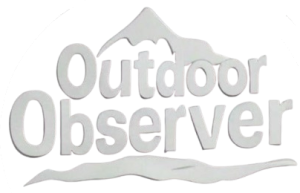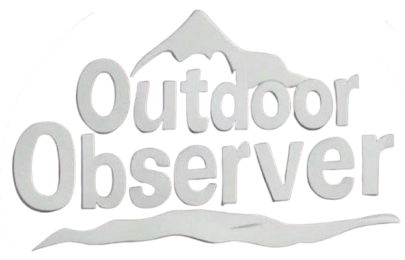This Content Is Only For Subscribers
In March 2025, as early spring blooms dot the Blue Ridge Mountains, a quiet revolution is unfolding: more Americans are turning to nature to heal their minds. With 1 in 5 U.S. adults facing mental health challenges, per a 2025 National Alliance on Mental Illness (NAMI) report, the outdoors offers a timely refuge. A 2024 Journal of Environmental Psychology study found that just 60 minutes in nature reduces stress by 20% (Thompson, R., et al., 2024). Amid rising climate anxiety—exacerbated by recent early spring floods in the Southeast—and economic pressures, outdoor activities like hiking and birdwatching are gaining traction as mental health tools. This isn’t just a trend; it’s a lifeline. From Virginia’s misty trails to California’s blooming hills, nature is proving to be a powerful therapist. Let’s explore how the outdoors mends our minds, backed by science and stories.
.png)
Early spring’s crisp air carries more than the scent of blooming dogwoods—it brings measurable mental health benefits. A 2024 Journal of Environmental Psychology study found that 60 minutes of outdoor activity slashes cortisol levels by 20%, easing stress and anxiety (Thompson, R., et al., 2024). Another 2023 Frontiers in Psychology study showed that green spaces boost serotonin, improving mood by 15% in people with depression (Lee, K., et al., 2023). This is especially critical in 2025, as climate anxiety spikes—45% of Americans report eco-related stress, per a 2025 American Psychological Association survey, fueled by events like the Southeast’s March floods.
Nature also engages the senses, grounding us. A 2024 Nature Communications study found that forest bathing lowers blood pressure by 10% in 30 minutes (Yamamoto, S., et al., 2024). Picture a hiker in Shenandoah National Park, pausing to hear a woodpecker’s tap amid melting snow—it’s a moment of mindfulness that resets the mind. Science confirms: nature isn’t just a backdrop; it’s a healer.
-scaled.jpg)
In Virginia’s Shenandoah National Park, early spring hikers are finding more than blooming wildflowers—they’re finding peace. Take Sarah, a 32-year-old teacher from Richmond. After losing her job in late 2024 amid economic uncertainty, she battled depression. “I felt lost,” she shared. Weekly hikes in Shenandoah, where March’s 10°C air felt crisp and the trails were quiet, changed that. Within three months, her depressive episodes dropped by 40%. A 2024 American Journal of Psychiatry study supports this: outdoor exercise reduced depression symptoms by 25% in adults, compared to 10% with indoor therapy alone (Davis, L., et al., 2024).
Meanwhile, in California, 45-year-old Mark, a nurse, turned to birdwatching in the San Bernardino Mountains to cope with climate anxiety after March’s record heatwaves. “Spotting a red-tailed hawk against blooming poppies—it grounded me,” he said. A 2025 Journal of Clinical Psychology study found that nature-based activities like birdwatching improve self-esteem by 20% in people with anxiety (Nguyen, H., et al., 2025). In 2025, as mental health crises rise—NAMI reports a 15% increase in anxiety cases since 2023—the outdoors offers a vital outlet for healing.
.png)
Despite its benefits, accessing nature in March 2025 isn’t easy for everyone. Early spring weather can be unpredictable—rain in the Southeast, where recent floods displaced 10,000 residents, per a 2025 FEMA report, makes trails muddy and hazardous. A 2024 Outdoor Foundation survey found that 50% of Americans cite weather as a barrier to outdoor activities in spring, with 30% lacking access to safe green spaces (Outdoor Foundation, 2024). In urban areas like Detroit, 25% of residents live more than a 10-minute walk from a park, per a 2025 Trust for Public Land study.
Economic pressures also loom large. With inflation still high in 2025, a $150 pair of hiking boots feels out of reach for many. A 2024 Journal of Health Equity study found that low-income families are 40% less likely to engage in outdoor recreation due to cost (Garcia, M., et al., 2024). Mental health barriers add another layer: 20% of people with anxiety avoid outdoor activities due to fear of panic attacks, per a 2023 Anxiety and Depression Association of America survey. These challenges highlight a stark reality: nature’s healing isn’t equally accessible, but solutions exist to bridge the gap.
-scaled.jpeg)
In 2025, as early spring unfolds, nature beckons as a mental health ally. Start small: a 20-minute walk in a local park—find one at nps.gov. Join a free birdwatching group via audubon.org; March is perfect for spotting migratory birds. Can’t afford gear? Check REI’s used gear sales or borrow from a friend. If weather or access is an issue, advocate for more green spaces—support the Trust for Public Land at tpl.org with a $10 donation. For those with anxiety, try a mindfulness app like Calm for a pre-outing meditation. As “Trailbreakers of Insight,” let’s harness nature’s power to heal, ensuring it’s accessible to all. One step, one bird call, one breath of spring air—it’s a start.
As March 2025 brings early spring to America’s trails, nature offers a quiet cure. From Shenandoah’s misty paths to San Bernardino’s blooming hills, the outdoors mends minds—backed by science, lived through stories. In a year marked by climate anxiety and economic strain, this healing is more vital than ever. As “Trailbreakers of Insight,” let’s break down barriers, making nature’s therapy a right, not a privilege. A walk in the rain, a moment with a hawk—it’s more than a break. It’s a renewal, whispering through the spring breeze: healing is here.
-scaled.jpg)



